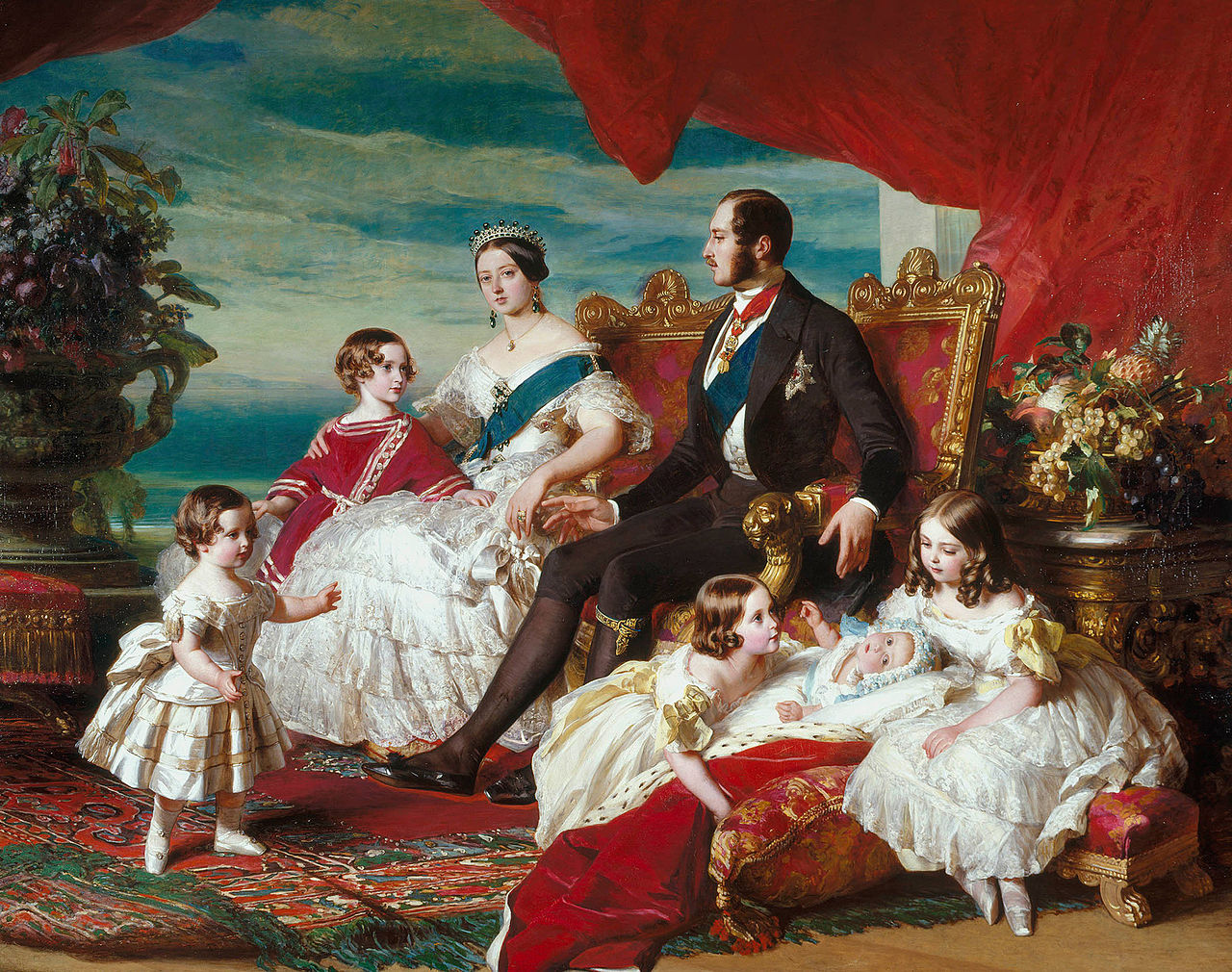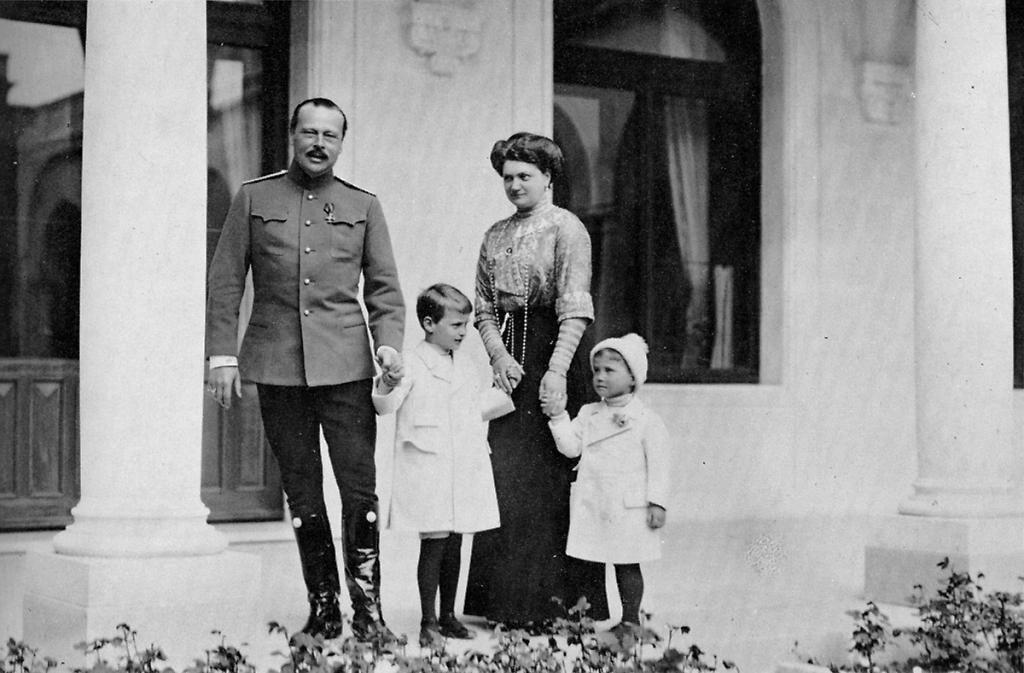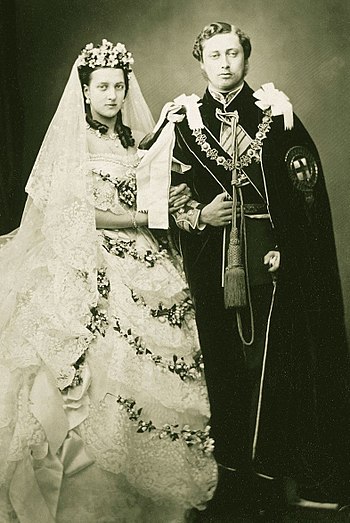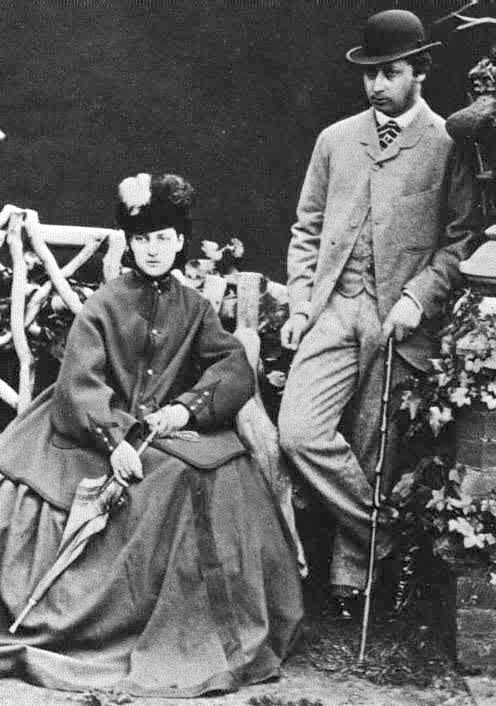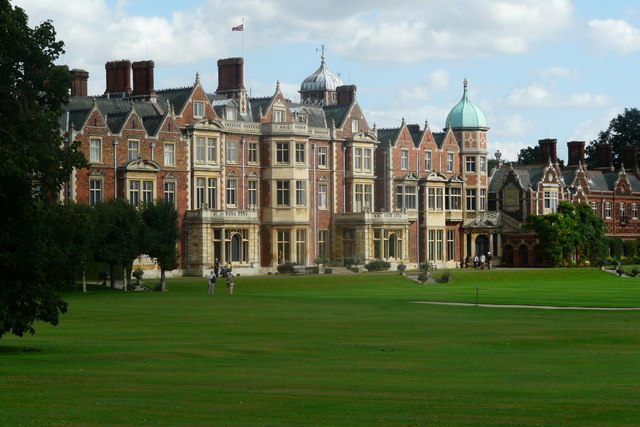by Susan Flantzer
© Unofficial Royalty 2018

Double Portrait of Elizabeth of York and King Henry VII; Credit – Wikipedia
On August 22, 1485, at the Battle of Bosworth Field, the last significant battle of the Wars of the Roses, the last king of the House of York and the Plantagenet dynasty, King Richard III of England, lost his life and his crown. The battle was a decisive victory for the House of Lancaster, whose leader Henry Tudor, Earl of Richmond, became King Henry VII, the first monarch of the House of Tudor.
Even though the first Parliament of Henry VII’s reign passed a bill confirming his right to the throne and settling the succession upon the heirs of his body, his genealogical claim to the English throne through his mother Lady Margaret Beaufort was tenuous. And so, he did what his Plantagenet ancestors did – he made a political marriage and that marriage helped validate Henry VII’s claim to the throne. Henry VII married Elizabeth of York, the eldest child of the Yorkist King Edward IV, thereby uniting the House of York and the House of Lancaster. Elizabeth had no surviving brothers and her uncle Richard III had no surviving children, and so her genealogical claim on the English throne was very much stronger than Henry VII’s. By today’s standards of absolute primogeniture, Elizabeth of York would have been the heir to the English throne.
During his reign, Henry VII’s two main goals were peace-keeping and economic prosperity, and he succeeded at both. He did not try to retake the territories lost in France during the reigns of his predecessors. Instead, he concluded a peace treaty with France, which helped fill the coffers of England again. Again, like his Plantagenet ancestors, Henry VII made political marriages for his two eldest children which helped fulfill his goals. He made a pact with Spain with the marriage treaty of his eldest son Arthur, Prince of Wales and Catherine of Aragon, the daughter of King Ferdinand II of Aragon and Queen Isabella I of Castile. He also allied himself with Scotland by marrying his daughter Margaret to King James IV of Scotland. Ultimately, this marriage would unite England and Scotland when King Henry VII’s great-great-grandson King James VI of Scotland succeeded King Henry VII’s granddaughter Queen Elizabeth I of England. Through his daughter Margaret Tudor, Henry VII is the ancestor of the British royal family and many other European royal families.
********************
To help foster the legitimacy of the House of Tudor, Henry VII made sure that the wedding of his heir Arthur, Prince of Wales to Catherine of Aragon was a festive and grand affair. When 16-year-old Catherine arrived in London, she was greeted by jubilant citizens and a number of tableaux vivants including one depicting the life of her patron St. Catherine. On November 14, 1501, Arthur and Catherine were married in a splendid ceremony at the Old St. Paul’s Cathedral in London. Old St. Paul’s was destroyed in the Great Fire of London in 1666 and its replacement was consecrated in 1697. There would not be another wedding at St. Paul’s Cathedral until 1981 when another Prince of Wales, Prince Charles, married Lady Diana Spencer.
A six-foot-high platform was built in Old St. Paul’s from the cathedral door to the altar so that all the guests could see all parts of the ceremony. The bride was escorted to the cathedral and led to the altar by the groom’s 10-year-old brother Henry, Duke of York, who, as King Henry VIII, would eventually become her second husband. Arthur and Catherine were dressed in white satin. Catherine’s dress was the first farthingale dress worn in England. The farthingale dress with hoop skirt stiffened with wood, became an essential part of Tudor fashion. A white silk veil bordered with gold and set with jewels was worn over the bride’s long, auburn flowing hair.

Wedding Feast of Arthur, Prince of Wales and Catherine of Aragon; Credit – Wikipedia
Festivities continued for days after the wedding for both the city of London and the royal court. There were so many people in the street that one observer noted, “There was nothing to the eye but only visages and faces, without the appearance of bodies.” Banquet after banquet was held in Westminster Hall for the royal court. Catherine and her ladies demonstrated Spanish dances and Prince Henry danced with his sisters and other ladies. Soon after their marriage, Catherine and Arthur went to live at Ludlow Castle in Shropshire, close to Wales, where, as Prince of Wales, Arthur presided over the Council of Wales and the Marches. Less than five months later, on April 2, 1502, Arthur died, probably of the sweating sickness, and 16-year-old Catherine was left a widow.
King Henry VII did not want to lose Catherine of Aragon’s dowry or the alliance he had made with Spain, so he offered his new heir Henry, who was five years younger than Catherine, to be her husband. A number of problems with negotiations made it doubtful that the marriage would ever take place. With little money, Catherine lived as a virtual prisoner at Durham House in London from 1502 – 1509.
********************
The marriage of Henry VII’s eldest daughter Margaret was a very political one. In 1502, England and Scotland concluded the Treaty of Perpetual Peace, agreeing to end the warfare between England and Scotland which had occurred over the previous two hundred years. As part of the treaty, a marriage was arranged between 28-year-old James IV, King of Scots and twelve-year-old Margaret Tudor. A proxy marriage was held on January 25, 1503, at Richmond Palace with Patrick Hepburn, 1st Earl of Bothwell standing in for King James IV. Margaret was exactly the same age as her grandmother Margaret Beaufort had been when she married Edmund Tudor. Margaret Beaufort was determined that her granddaughter not consummate her marriage at such an early age and insisted that Margaret must remain in England a while longer.

James IV, King of Scots and Margaret Tudor; Credit – Wikipedia
In 1503, Margaret left London with her father to make the journey to Scotland. Her formal court farewell was held at her paternal grandmother’s home Collyweston Palace near Stamford, Northamptonshire, England. After two weeks of celebrations, Margaret rode out to her new life with only one relative, Sir David Owen, the illegitimate son of her great-grandfather Owen Tudor. On August 3, 1503, at Dalkeith Castle in Midlothian, Scotland, Margaret first met King James IV. The couple was married in person on August 8, 1503, at Holyrood Abbey in Edinburgh, Scotland.
********************
King Henry VII died on April 21, 1509, and 17-year-old Henry succeeded him. Henry VIII’s reign seems to be the beginning of the period when royal weddings were mostly private and held in palace chapels, the Queen’s Closet (a small room used as a private chapel or prayer room) or bedchambers. This tradition continued with the Stuarts and the Hanovers. It was not until the reign of Queen Victoria that royal weddings became more public.

16th-century woodcut of the coronation of King Henry VIII of England and Catherine of Aragon showing their heraldic badges, the Tudor Rose and the Pomegranate of Granada; Credit – Wikipedia
Henry VIII’s first wedding to his brother’s widow Catherine of Aragon was quite sedate. Henry and Catherine walked from Greenwich Palace to a nearby Franciscan abbey, Grey Friars’ Church, and were married. Henry VIII’s marriage to Anne Boleyn was anything but public. Anne was pregnant and Henry was still legally married to Catherine of Aragon. On January 25, 1533, Henry VIII and Anne Boleyn were secretly married at York Place in London which later became Whitehall Palace. Eleven days after the execution of Anne Boleyn in 1536, Henry VIII quietly married his third wife in the Queen’s Closet at Whitehall Palace. Seventeen months later, Jane Seymour would be dead due to childbirth complications after giving birth to Henry’s only son.
********************
Anne of Cleves has the distinction of being considered Henry VIII’s most fortunate wife. She arrived in Deal, England on December 27, 1539, and then she proceeded to Rochester on New Year’s Day. Henry VIII was so eager to see Anne, that he went to Rochester incognito. Henry was terribly disappointed by his new bride. He found Anne humorless and boring. She looked unimpressive in her German costume, acted shy and did not speak English. Henry postponed the wedding for two days and regretted that he could not withdraw from the marriage contract.

King Henry VIII and Anne of Cleves; Photo Credit – Wikipedia
Reluctantly, Henry married Anne of Cleves on January 6, 1540, at Greenwich Palace in Greenwich, London. The marriage was never consummated, and it was said that the couple spent the night playing cards. Henry told his chief minister Thomas Cromwell, “I liked her before not well, but now I like her much worse.” On July 6, 1540, Anne of Cleves was informed that Henry wanted to end the marriage and Anne agreed to an annulment which was finalized on July 9, 1540, on the grounds of non-consummation. Anne of Cleves remained in England. Henry VIII’s “most fortunate wife” was given a generous financial settlement and the use of Richmond Palace and Hever Castle. Anne was frequently at court, had a cordial relationship with Henry and his children, and was referred to as “the King’s Beloved Sister.” She survived Henry and all his wives.
********************
Henry secretly married his fifth wife, teenaged Catherine Howard at a very private wedding at Oatlands Palace in Surrey, England on July 28, 1540, the same day Thomas Cromwell, the scapegoat for the failed marriage to Anne of Cleves, was executed for treason and heresy. Henry called his teenage bride his “rose without a thorn.” Catherine soon proved to be a rose with many thorns because of her affair with Thomas Culpeper, a Gentleman to the King’s Privy Chamber and like her first cousin Anne Boleyn, she was executed.

King Henry VIII and Catherine Howard: Credit – Wikipedia
********************
Catherine Parr, Henry VIII’s sixth wife was more of a nursemaid to the ailing king. Catherine had fallen in love with Thomas Seymour, brother of Henry VIII’s late third wife Jane Seymour, and the two hoped to marry. However, Henry VIII began to show an interest in Catherine and she felt it was her duty to choose Henry’s proposal of marriage over Thomas Seymour’s. Seymour was appointed an ambassador to the Netherlands to get him out of England. In 1543, Catherine Parr and Henry VIII were married in the Queen’s Closet at Hampton Court Palace in front of twenty guests. Catherine proved to be a good nurse to Henry and a kind stepmother to his three children. After Henry VIII’s death in 1547, Catherine finally married Thomas Seymour, uncle of the new King Edward VI. Tragically, Catherine died on September 5, 1548, of childbed fever after giving birth to a daughter who appears to have died young. Six months after Catherine’s death, her widower Thomas Seymour was beheaded for treason.

King Henry VIII and Catherine Parr; Credit – Wikipedia
********************
All of Henry VIII’s children succeeded to the throne: his son by Jane Seymour King Edward VI, his daughter by Catherine of Aragon Queen Mary I and his daughter by Anne Boleyn Queen Elizabeth I. However, only Mary I married. Roman Catholic Mary I was 37 when she came to the throne and it was vital that she marry and produce an heir to supplant her Protestant sister Elizabeth. Mary had her heart set on marrying Prince Philip of Spain (later King Philip II of Spain), the only son of Mary’s first cousin Charles V, Holy Roman Emperor. Philip was a widower and was eleven years younger than Mary. Parliament begged her to reconsider fearing the threat a marriage to a foreign royal might have for English independence.

Queen Mary I and her husband Philip of Spain, Bedford Collection, Woburn Abbey; Credit – Wikipedia
Nevertheless, Mary and Philip were married at Winchester Cathedral on July 25, 1554. This was the first public wedding of a monarch since the wedding of Mary’s grandparents King Henry VII and Elizabeth of York in 1486. Philip wore a splendid outfit: a white doublet and breeches and a mantle of clot-of-gold trimmed with crimson velvet, and embroidered with gold thistles. Mary I wore a black velvet gown glittering with jewels of all colors and a cloth-of-gold mantle matching Philip’s. A lavish feast followed the wedding.
The marriage was not successful. Although Mary was in love with Philip, he found her repugnant. In September 1554, Mary thought she was pregnant and continued to exhibit signs of pregnancy until July 1555, when her abdomen returned to normal. There was no baby. After 14 months of marriage, Philip returned to Spain in August 1555. Mary was heartbroken and went into a deep depression. Philip did return to England in 1557 and was happily received by Mary. Philip wanted England to join Spain in a war against France. Mary agreed and the result was the loss of Calais, England’s last remaining possession in continental Europe. Philip left England in July 1557, never to return. Mary said of these losses, “When I am dead, you will find the words ‘Philip’ and ‘Calais’ engraved upon my heart.”
King Henry VII’s vision of a new dynasty lasted for only three generations. After Queen Elizabeth I died in 1603, a messenger was sent at once to Scotland to bring King James VI of Scotland, the great-grandson of Margaret Tudor, the news of his accession to the English throne as King James I of England. The House of Stuart did not do much better – their dynasty lasted for only four generations.
**************************
Weddings of Tudor Monarchs and Their Children
There were not a lot of Tudor weddings. Henry VIII’s six weddings accounted for nearly half of them. Wedding venues that have official websites or Wikipedia articles will be linked below. Sometimes the city where the wedding took place is known but the actual wedding venue is unknown. Only married monarchs and their married children are listed. Links are to Unofficial Royalty articles for the monarchs, their children, and their spouses. Note that not all the spouses have Unofficial Royalty articles.
Henry VII, King of England (great-great-great-grandson of Edward III) married (1486) Elizabeth of York at St. Stephen’s Chapel in the Palace of Westminster
- Arthur, Prince of Wales married (1501) Catherine of Aragon at the Old St. Paul’s Cathedral in London, England
- Margaret Tudor (1) married (1503) James IV, King of Scotland at Holyrood Abbey in Edinburgh, Scotland (2) married (1514) Archibald Douglas, 6th Earl of Angus in Kinnoull, Scotland (3) married (1528) Henry Stewart, 1st Lord Methven, wedding venue unknown
- Mary Tudor (1) married Louis XII, King of France (1514) at Abbeville, France (2) married (1515) Charles Brandon, 1st Duke of Suffolk at the Hôtel de Cluny in Paris, France
Henry VIII, King of England (son of Henry VII)
(1) married (1509) Catherine of Aragon at the Grey Friars’ Church in Greenwich, England
(2) married (1533) Anne Boleyn at York Place which later became Whitehall Palace
(3) married (1536) Jane Seymour in the Queen’s Closet at Whitehall Palace in London, England
(4) married (1540) Anne of Cleves at Greenwich Palace in Greenwich, England
(5) married (1540) Catherine Howard at Oatlands Palace in Surrey, England
(6) married (1543) Catherine Parr at Hampton Court Palace in Richmond, England
Mary I, Queen of England (daughter of Henry VIII and Catherine of Aragon) married (1554) Prince Philip of Spain (later King Philip II of Spain) at Winchester Cathedral in Winchester, England
This article is the intellectual property of Unofficial Royalty and is NOT TO BE COPIED, EDITED, OR POSTED IN ANY FORM ON ANOTHER WEBSITE under any circumstances. It is permissible to use a link that directs to Unofficial Royalty.
Works Cited
- Ashdown, D. (1981). Royal Weddings. London: Robert Hale Limited.
- Genealogics.org. (2018). [online] Available at: http://www.genealogics.org [Accessed 2 Apr. 2018].
- Unofficial Royalty. (2018). Unofficial Royalty. [online] Available at: https://www.unofficialroyalty.com [Accessed 2 Apr. 2018]. (Tudor articles)
- Weir, A. (2001). Henry VIII: The King and His Court. New York: Ballantine Books.
- Wikipedia. (2018). Main Page. [online] Available at: https://en.wikipedia.org/ [Accessed 2 Apr. 2018]. (for wedding venue and genealogy information)







